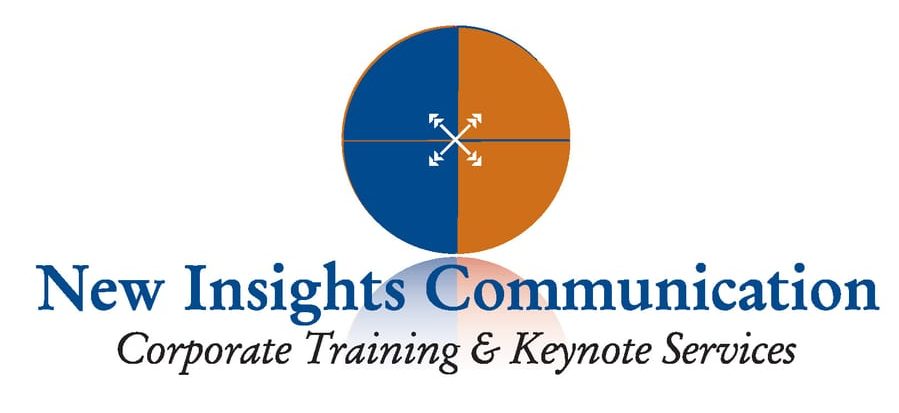Nothing causes a talk wreck on the crammed and jammed Communication Highway faster than taking your eyes off the road and yelling at a fellow talk passenger: “It’s my way or the highway!” In fact, that kind of “It’s-all-about-me!” negative thinking and talking is an exclusive VIP club you can’t afford to belong to. Why? It excludes others by making them feel as unimportant and insignificant as dirty stale gum stuck to the bottom of an old tennis shoe.
EFFECTIVE LEADERSHIP COMMUNICATION
The Entrepreneurs Center in Dayton, Ohio, recently asked me to host a “Talk to Me” business communications seminar to help “incubating companies” and “entrepreneurial leaders” get a good grip on good communication. The leadership group developed this list of communication roadblocks…do any of them fit your situation with communication at work?
9 ROADBLOCKS TO GOOD COMMUNICATION AT WORK
Roadblock #1: Not being interested in what people have to say. “Turning a deaf ear” to those people who come across too strong, or talk too much and create creating “white noise” that is distracting.
Roadblock#2: Not having an agreed-upon system of communication. Clear communication channels that everyone can use so that talk is focused on producing positive results and not watered down with platitudes.
Roadblock #3: Not being open-minded. No resolution of issues, much less a full exploration of issues to know the travel options on the talk highway.
Roadblock #4: Not enough “kneecap-to-kneecap” and “eyeball-to-eyeball” opportunities for regular, weekly communication. The “virtual office” undermines the need for human connection and contact, and thus deprives us of the synergy that “alive and lively” emotional interaction promotes.
Roadblock #5: Not cooperating confidently. Insecurity complexes or “hoarding of vital information” to “feel secure” and “in control” of one’s work environment.
Roadblock #6: Not staying mentally on track. Drifting off in fantasy, reverie or throwing a private irritating pity party as talks become boring or stuck in a rut.
Roadblock #7: Not listening to what you don’t want to hear. Complex problem-solving does not thrive in a black-and-white world; it prefers a colorful world that values holding differing viewpoints in your mind at the same time.
Roadblock #8: Not remaining patient and calm while driving in crowded talk traffic. Stressing out while driving on the communication highway and blurting out put-downs or put-offs that make passengers stare off into blank space.
Roadblock #9: Not being patient with or understanding your opposite communicator type. Empathizers who blow off Instigators as “blowhards,” and Instigators who snub Empathizers as “too touchy-feely.”
LET’S TALK FOR A CHANGE
You can drive around any of these roadblocks with skill and aplomb when you spend four minutes a day using the “Talk to Me” communication system. First things first: Know your own communicator type. Second things second: Know how your opposite communicator type views you negatively. Third things third: Keep stopping along the way to put gas in your tank, so your energy will be positive when your temper is tested.
ARE YOU A XENOPHOBE?
A “xenophobe” is a person who is unduly fearful, contemptuous or suspicious of strangers or foreigners, namely, new people you don’t know who are new to you. What better to do: You can listen well and ask directive questions to encourage everyone with whom you come in contact to attend a “Let’s Talk” town meeting of the minds…especially helpful as you travel on down new highways and byways of change.
ARE YOU CAUSING A TALK WRECK?
Here’s a tried-but-true tireless example of being a good communicator: If you don’t know the names of the people on the cleaning crew in your office, then you aren’t communicating in open ways that include everyone to do better business today. Nothing stops or blocks open talking from flowing on the two-way Communication Highway faster than bellowing at a fellow talk passenger: “It’s my way or the highway!” Why? It excludes and rejects others and turns you into a xenophobe.
ABOUT LEADERSHIP COMMUNICATION PSYCHOLOGIST DR. DENNIS O’GRADY, PSY.D.
Dr. Dennis O’Grady is a Dayton-based communications psychologist and relationship expert who has spent over 30 years of his career dedicated to the advancement of organizational and leadership development, personal executive coaching, effective couple communication skills, and positive and effective communication strategies for anyone. Dennis is the author of three books, and father to three daughters, two of whom are teenagers. Dr. O’Grady is the developer of the “Talk to Me: Communication Moves To Get Along With Anyone” system available on his Web site and at Amazon.
